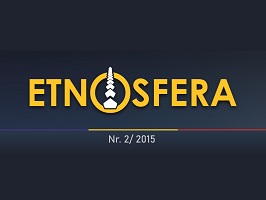Management aplicat – între competitivitate și funcționalitate. Studiu de caz. Partea a II a
Practical management - between competitiveness and operability. Case study - Part II
Author(s): Solomon Ovidiu, Mihăilă Oana-MădălinaSubject(s): Economy, Business Economy / Management, Archiving, Socio-Economic Research
Published by: Editura Academiei Române
Keywords: management; archival; market; competitive advantage analysis;
Summary/Abstract: This report aims to outline the strategic architecture analysis of the XENOPS Company, a private company that activates within field of archival services. This company is one of the market leaders in the field of archiving and document management, having a promising potential for future development, mainly based on highly qualified staff and the provided services, which are not only highly qualitative, but also affordable. However, the XENOPS Company needs significant improvement on its strategic choices. The dynamic of the organizational environment is determined by a number of factors which would force any company to adopt self-innovative management strategies, capable of ensuring permanent competitive advantage and durable market presence. Achieving these two main goals underlines the implementation of such strategies that are in line with the social, economic, political, legal, cultural and natural environment. The organizational climate, the quality of services, the technological tools – all these are basic elements in an organization, also being an intrinsic part of a competitive strategy, but, their development on an internal, functional basis, independent of competitors’ trajectory, may only be a reflex towards a successful management, such as the case of XENOPS Company, that we chose to analyze in this paper, without the certainty of a sustainable growth, hypothesis which is verified in this study. In terms of used analytical tools, we decided to use SWOT and PEST analysis as key instruments. We also conducted an analysis of the company's core competencies, thus highlighting the competitive advantage that the company has on its the market segment. The main finding relies on the fact that the company has a rather mixed competitive strategy, mainly based on the transition from a cost-leadership strategy (price advantage) to a manner that is focused on differentiation. Given the fact that the company’s services are constantly improved and updated, more and more differentiation-based issues emerge within its strategic architecture. Therefore, the current status of the company is more centered on the costleadership strategy. However, for this particular company, the problem within its strategic architecture relies on the lack of a centralization of all issues regarding competitive strategies. The root of the problem is to be found in the fact that the company’s management team makes use of a strategic approach that is more centered on the operational side, while not enough attention is drawn to the organizational external environment (competition). This means that an effort was made within each department towards improving its provided services, in order to gain a competitive advantage, but the information is not centralized and there is no market research department, focused on locating and attracting possible customers. The main activities of such a business department should be based on the competitive advantages arising in other departments and also on the information that is collected through market and competition analysis. Moreover, we believe that it is essential for the XENOPS Company to develop a marketing campaign, in order to improve its visibility. These strategies could help the company make a name within the industry, especially since XENOPS is very active in Corporate Social Responsibility.
Journal: Etnosfera
- Issue Year: 26/2015
- Issue No: 2
- Page Range: 1-17
- Page Count: 17
- Language: Romanian

